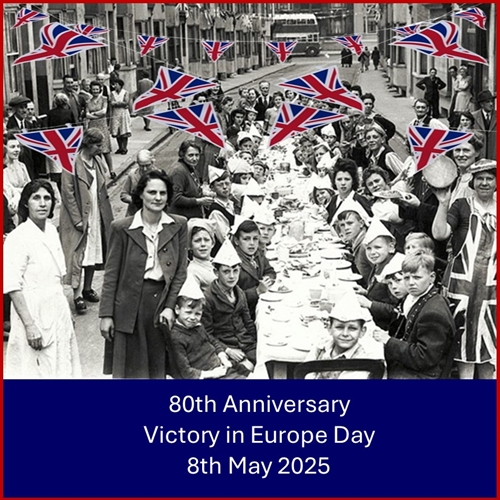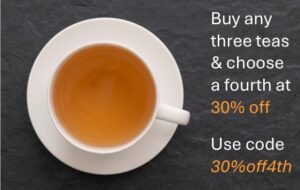Commemorating the 80th Anniversary of VE Day, 8th May 2025

In a small way tea did help secure victory for British forces as a significant part of the allied war effort. Tea in the war was and remains a cultural icon, refreshing and fortifying the Army, Royal Navy and Royal Air Force in combat operations as well as at their bases.
Creating moments to restore mental strength and opportunities to come together, preparing and drinking tea provided a boost to morale and an opportunity for a brief rest, just as it did to the civilian population, working in the factories and home guard to support their forces, even when circumstances were far from ideal. The ability to brew tea in the most testing of conditions became almost legendary: “making a brew” in slit trenches, in tanks, submarines and in make-shift camps was often the priority once a skirmish or military operation was over.
Tea, a cultural icon
For centuries tea has become a cultural icon ever since it replaced beer as the national drink. When fighting, tea offered warmth, rehydration, mental focus, through its caffeine content, as well as its ability to sooth by calming frayed nerves. Of course, tea being made using boiling water offered a safe way to drink when water quality was not always reliable and avoided the consumption of alcohol, important when days were long and you might have to have your wits about you at any moment.
What tea was drunk?
Tea in the war was strong and robust black tea from the colonies of Assam in India, Ceylon and East Africa. Tea was loose, teabags not yet having made their presence known. It was drunk with milk and sugar and, on maneuver, rations tins often contained tea mixed with sugar and powdered milk. For the general population tea was rationed in Britain, amounting to two ounces per week per person. This was sufficient for about three cups of tea each day.
On 8th May 1945 there were huge celebrations to mark Victory in Europe Day. Street parties were held tea, cakes and pies made with pantry staples subject to the limitations of continued rationing. There was dancing and singing, huge gatherings and crowds, especially in London, speeches by Winston Churchill and appearances of the Royal family on the balcony at Buckingham Palace. But for many there was ongoing sadness of the family losses brought by the war.
Family experiences of World War II
Many of us have family histories to recite from the Second World War. My grandfather, Commander Aubrey Grey, who fought in the First World War, was awarded the Stanhope Gold Medal from the Royal Humane Society. In the Second World War he developed air launched torpedoes for the Royal Navy, based at Greenock. For his work on gyroscopic guidance he received an award from the Government with which he bought his first house in Titchfield, near Portsmouth. Also a naval Commander, was D. G. H. ‘Jake’ Wright DSC of the Royal Naval Reserve. His biography gives a fascinating insight into the war. Furthermore, he had a career in the tea trade with Brooke Bond and returned to later become a director after the war. He was one of only forty-four commanders to win a Distinguished Service Cross with two Bars and had valiant exploits around the British coastline laying mines and attacking the enemy. His biography “Torpedoes, Tea, and Medals” by Chris O’Flaherty has received much praise.
Undoubtedly tea in the war did much to strengthen and give solace to people in many roles and so help win World War II. Tea remains popular today for the same reasons: refreshing, soothing, stimulating and bringing people together to help celebrate our freedom.
Which tea would be closest to the type typically drunk in World War Two? Try our Good Morning! blend.


